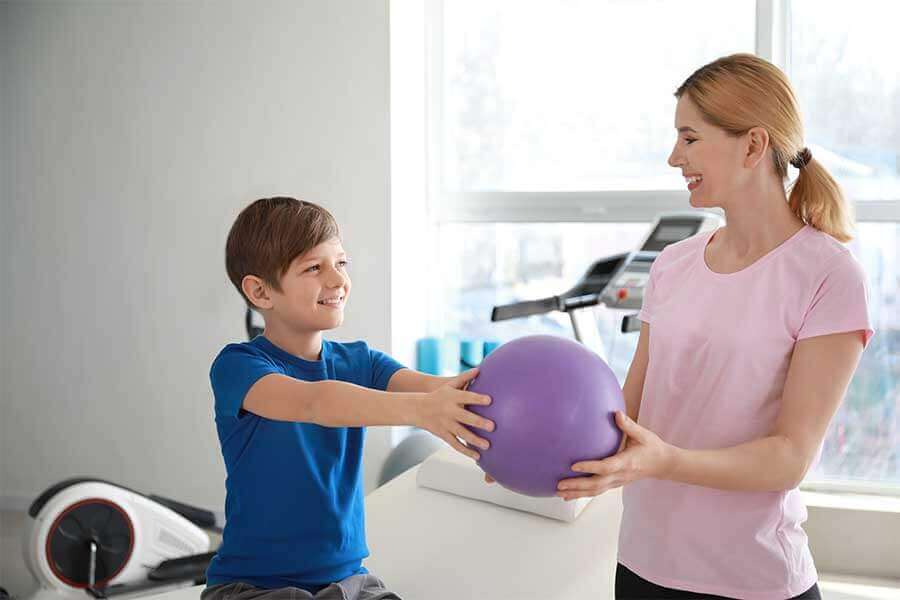Help Your Child Kick the Habit of “W” Sitting with Pediatric Physical Therapy
One of your primary concerns as a parent is assisting your child in overcoming physical challenges that might be preventing them from reaching their full potential. “W” sitting is one of the most common issues for children who visit pediatric physical therapy centers.
A physical therapy program will help you overcome the issue of W sitting, but first, you must learn more about it. Continue reading to learn more about W sitting and how physical therapy sessions with your child’s physical therapist can improve. You may even make an appointment for your child to visit the office right now.
What is ‘W’ sitting?
W sitting is a sitting position in which your child sits while bending their knees and placing their feet splayed out from their hips. You can recognize this position by standing above your child while they’re sitting on the floor.
If they’re in the W sitting position, you’ll be able to see the general shape of a W, with their body forming the middle of the letter and their legs making the outer part of the letter. Your physical therapist can help you recognize this sitting position.
How pediatric physical therapy helps with “W” sitting in children
Your physical therapist will assist you with a physical therapy program that is specifically tailored to help your child learn to sit in better positions.
When in physical therapy, your child will learn a lot of new things and have a fun time doing it. Pediatric physical therapy focuses on providing a safe and gentle environment for both parents and children.
Your child’s physical therapist can recommend some measures to take at home to help prevent W sitting. These tips may include:
- New sitting options: Consider purchasing a new chair that your child likes, perhaps even allowing them to pick it out themselves. Your child will be much more likely to avoid W sitting on the floor if they have a chair that they love.
- Reinforce physical therapy: You can reinforce physical therapy lessons at home. Remind your child of the new sitting positions that they learned from their physical therapist and help them practice these new positions at home every night.
- Reminder phrase: A simple reminder phrase like “fix your legs” can prompt your child to reposition themselves promptly when you observe them in a W sitting position.
Why does “W” sitting need to be corrected?
“W” sitting is okay for short periods, but you should discourage your child from staying in the W sitting position for any extended period of time.
Your physical therapist can explain more about some of the dangers of the W sitting position, including:
- Muscle problems: Children who are undergoing physical therapy for conditions such as hypertonia should stop sitting for long periods of time. Your child’s muscle tightness and physical disability can worsen if he or she sits for long periods of time.
- Poor core strength: Many children who need a physical therapy program have poor core strength, and the W sitting position can make it even worse. If your child sits in the W sitting position, they won’t be using their core muscles enough. Your physical therapist can help with other sitting positions that can actually enhance core strength.
- Dislocated hip: Some children in physical therapy programs already have hip issues, and the W sitting position can make it worse. Continued W sitting may even lead to a dislocated hip.
Correcting “W” sitting for your child with help of Pediatric Physical Therapy.
As previously mentioned, this type of sitting can pose several issues down the line for your child, such as:
Hip dysplasia
Orthopedic issues
Bilateral coordination issues
And more
Fortunately, physical therapy can help correct this type of sitting. According to Healthline,
“If you only see your child sitting in the W-position from time to time, you may not need to correct them. Pay attention to see if they shift themself out of the position easily and that they change positions throughout the play.
Encourage your child to try a variety of sitting positions, such as these from British Columbia’s Quesnel & District Child Development Centre:
- long-sitting (legs straight out in front)
- kneeling
- squatting
- criss-cross sitting (try to alternate which leg is on top)
- tailor-sitting (both legs bent with feet touching)
- side-sitting (knees bent, both feet on the same side of body)
Other tips from Orlando’s Arnold Palmer Hospital for Children:
- Instead of telling your kid, “Fix your legs!” tell them, “Move into criss-cross legs so you can develop powerful muscles.” Maintain a good attitude. You can also tickle or hug younger children to get them to shimmy into a new place.
- Consider offering different seating options, like bean bag chairs or small step stools. Alternatives will encourage your child to move around often and help balance the strain on the legs.
- Get your child moving in other ways to encourage development. Things like yoga, the game Twister, and playground play (balance beam, climbing slides, etc.) are all good options.”
Ready to get started?
Ready to help your child improve their posture and body position when they’re sitting? We can help. Contact us today to schedule a physical therapy appointment.
Sources:
- https://www.healthline.com/health/baby/w-sitting#what-to-do
- https://quesnelcdc.com/userfiles/file/Sitting%20Positions.pdf
- https://www.arnoldpalmerhospital.com/content-hub/why-w-sitting-might-be-a-cause-for-concern
Tags: Pediatric Physical Therapy, w sitting, Pediatric Physical Therapist, Child healthcare, health and fitness, Child Development



